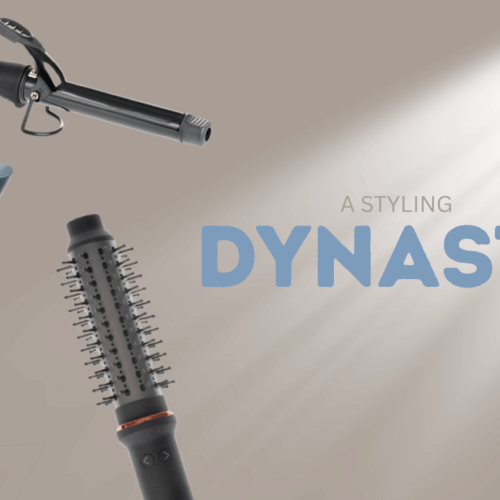Working in the new normal ‘Post-Pandemic’ world takes financial stamina says Sandra Pajak, Financial Director of Headquarters Hair Salon, Kingston.
Hair salons have faced challenges in the past – but never anything quite as unprecedented as a pandemic that requires a 15 week closure. We all breathed a collective sigh of relief when, finally, we could re-open our doors in July .
This “new normal”, however, is anything but a post-pandemic situation. It’s very much a MID-pandemic situation. Covid 19 is far from over – the reality, we now know, is that we will have to operate our businesses for many more months with it in our midst.
That means planning for the future while there is still huge uncertainty about what the future will look like, and operating in a ‘present’ that is ever-changing.
One thing is certain. The challenge ahead of us is far greater than the one we faced during lockdown and closure.
Firstly, salon revenues are reportedly down by around 25% compared to pre-Covid years – and they will remain down because we will have to continue working at a limited capacity for several more months while social distancing and additional-cleaning restrictions remain necessary.
Then there is the impact of the wider economy. The UK economy plunged by 20.4% in the April-to-June Quarter (according to ONS) – and to give you an idea of just how bad that is, in the 2008-2009 recession the economy shrunk by just 6% – and took 3 more years to get back to pre-recession levels.
So we’re not going to bounce back from this one any time soon. And now that the furlough scheme has ended, economists fear that unemployment, currently at 4%, could rise as high as 12%. That’s almost certainly going to result in even weaker consumer demand for hair appointments as redundancies hit clients and their disposable incomes.
Added into that mix is also an element of cautious consumer behaviour. Most people realised in lockdown how much they rely on their hairdressers, and the initial demand for our services in in July was a wonderful affirmation of that.
It suggests that client confidence itself is largely not an issue for many. Nevertheless we have to factor into our financial planning a drop in longer-term demand because some clients are still shielding, and others are simply being more cautious about taking the risk of visiting a salon as frequently as before, and they’re pushing their colour back from 6 weeks to 8 or 9 weeks – after all, they went 15 weeks without their colour during lockdown!
On top of that, we are having to factor in ongoing disruption caused by team-members having to self-isolate for 14 days – and the very real possibility of possible local lockdowns which would further increase caution and impact on revenue. Boris Johnson has not ruled out the closure of close-contact services if new cases rise significantly.
Having been in business for more than 20 years, with regulars making up 90% of our clientele, I used to be able to predict our monthly turnover to within £1000 – but not anymore. There are just so many unknowns in the next six months.
The big challenge, therefore, is how do we ensure we continue to make a profit when our revenue is falling but our fixed costs remain the same? That precious profit margin has to be watched more closely than ever. So, what can we do?
Firstly, we prepare for a loss of revenue by cutting operational costs wherever we can. Talk to suppliers, shop around for better deals. Renegotiate your card deals. Talk to landlords to see if they’ll defer some rent into 2021. Get rid of any excess “baggage” – we need to be running lean machines.
Secondly, we maximise the client spend from the clients we do have. If there was ever a time to reward client loyalty, it’s now. Offer a loyalty discount if they re-book in 6 weeks’ time, or perhaps add a loyalty free-gift – or a bonus scheme where clients accumulate points or benefits over the coming months to be cashed-in next year.
Add treatment incentives to encourage additional spend. Make the client’s in-salon experience the best it’s ever been – so they definitely feel that the benefit of visiting the salon outweighs any potential risk associated with it.
Factor your PPE costs into your pricing, so you’re not out of pocket. And reach out to new clients – because sadly some salons won’t survive, and so there will be clients out there looking for a new hairdresser.
And finally – as an industry – we need to make some collective noise about the unfairness of VAT and Business Rates for hair salons.
The hospitality sector is benefitting from a temporary cut in VAT to 5% until March 2021 – yet that benefit has not been extended to hair salons even though we face the same limits on seating capacity as restaurants and pubs do, and our staff have to wear more PPE.
So, join the “Chop the VAT” campaign, sign the petition, and follow, tweet and share it. We know that this Government is not averse to doing a u-turn if a sector shouts loud enough!
Similarly – the Business Rates revaluation has been postponed to 2023, and in the meantime we are expected to pay 2015-based Rates while we all know that High Street rental values have in fact plummeted. As an interim measure, we should be lobbying for Retail Business Rates bills to be cut in half until the postponed revaluation.
We’re almost certainly facing the most unpredictable trading circumstances of our entire careers – but what we do know for certain is that hair salons were definitely one of the most-missed services during lockdown.
So, if we plan prudently for the next six months, maintain our high levels of service, and can manage to be agile and reactive and flexible in the short-term, then our businesses can emerge from this pandemic stronger than ever.
hqsalon.com





